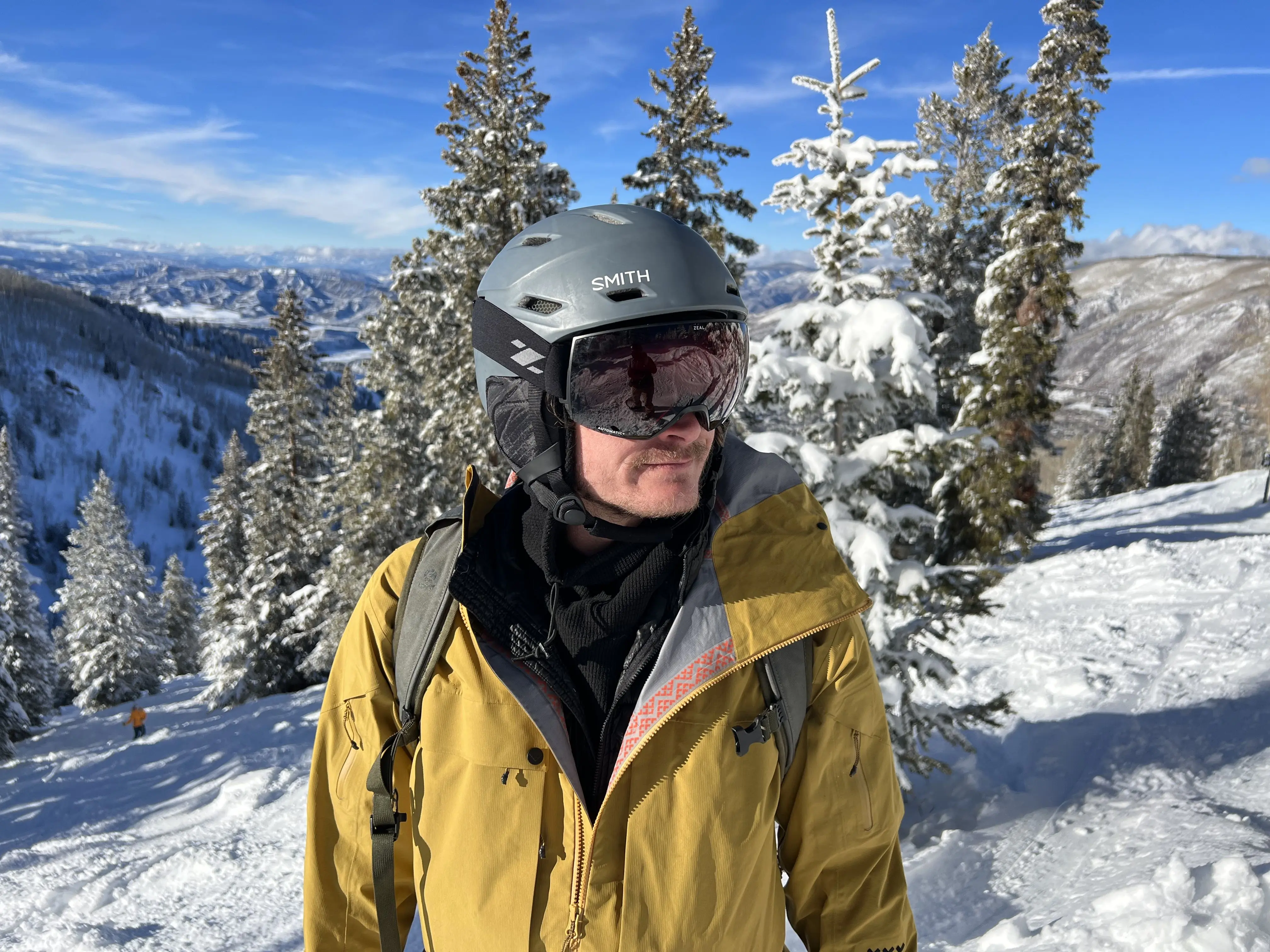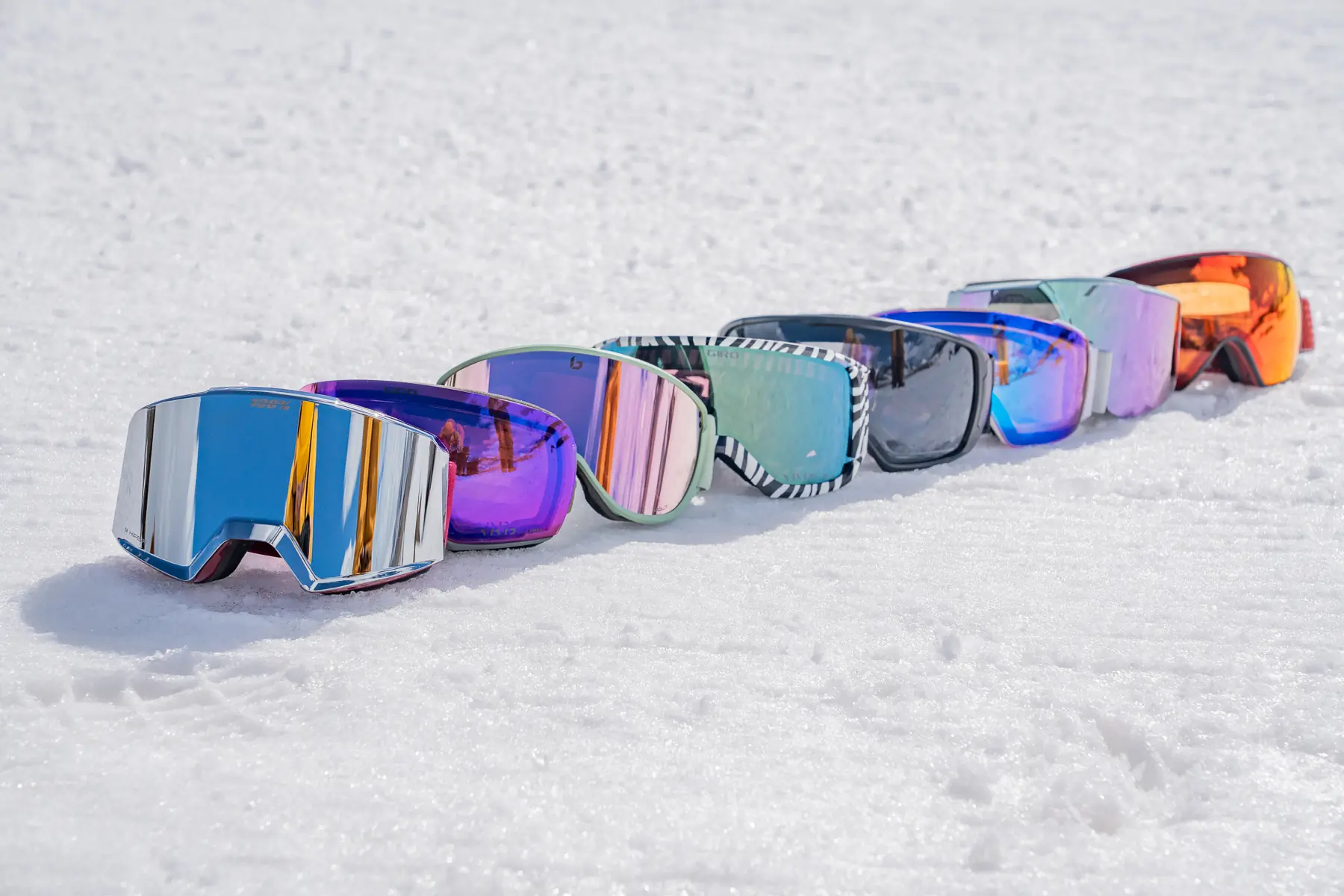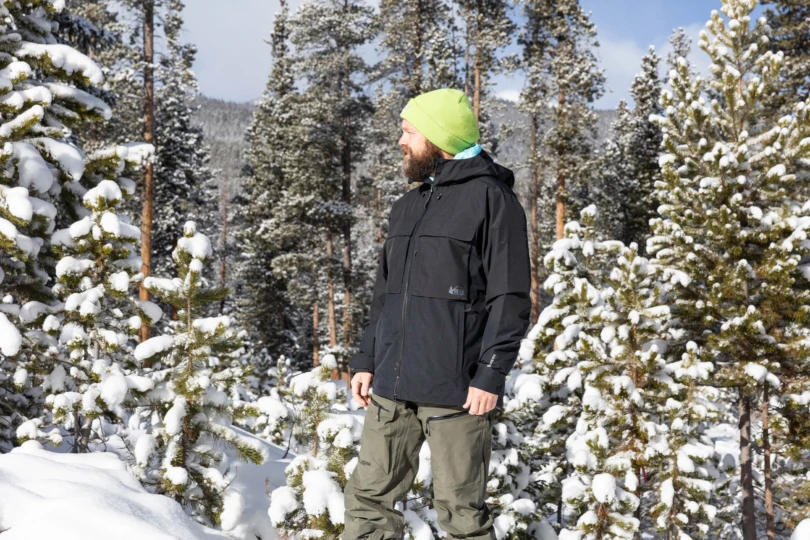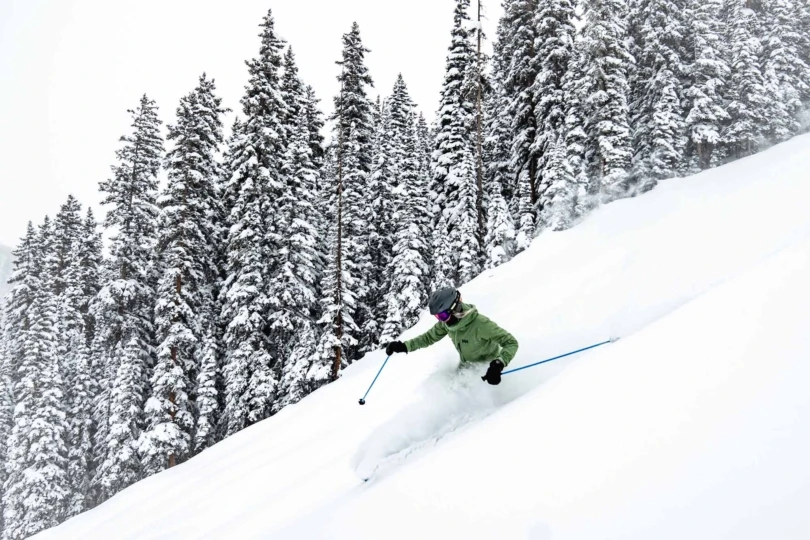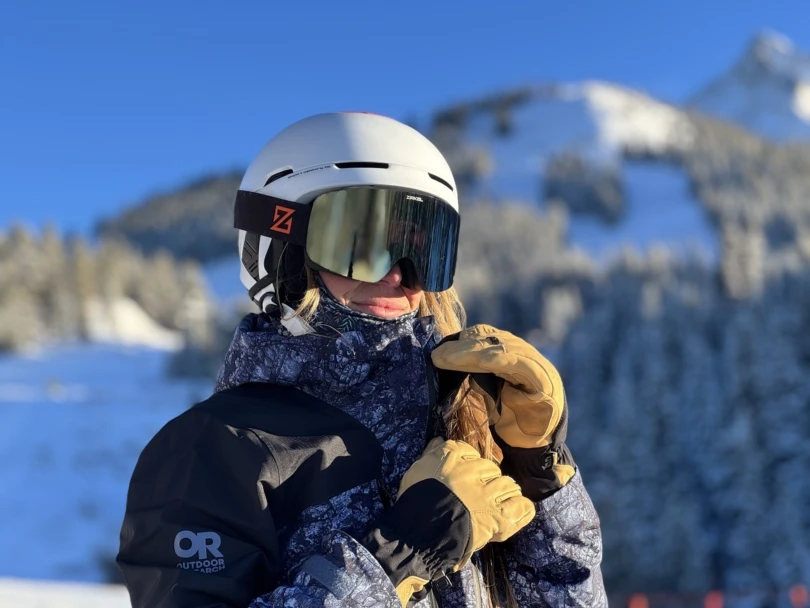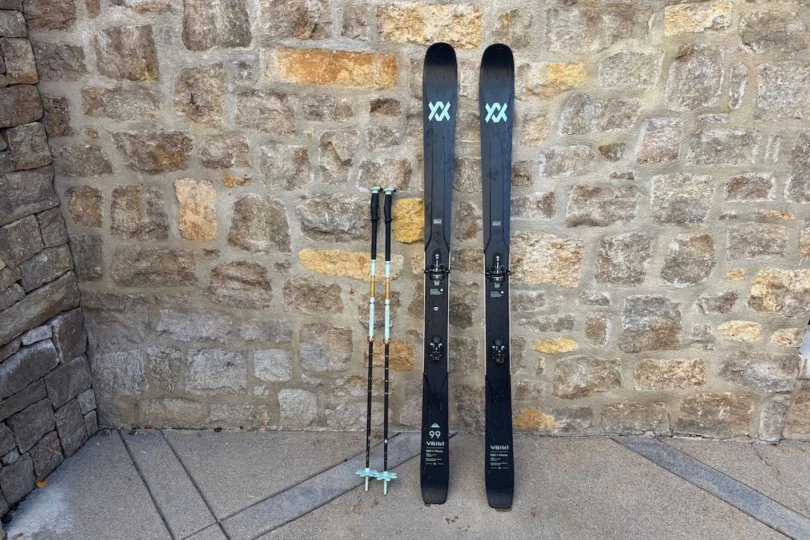I was charging down Beaver Creek’s Golden Eagle, no doubt one of the first people to hit the run after patrol dropped the rope that morning. But the snow was choppy, and the terrain was variable. My K2 Mindbenders plowed through stale drifts of windblown snow, driving over settled tracks that would have bucked and kicked me on most other skis.
There were plenty of obstacles still to navigate, though. The tops of pine trees poked through the snow, craters left by avalanche explosive charges pockmarked the run, and rocks hid like sharks in the water, waiting to strike.
Fortunately, I could see it all in clear relief. Every obstacle I approached was easy to spot. And as I passed over them, they stayed within my peripheral vision until I was pretty much past them.
It was the first time I realized how much more I could see wearing the 2023 Zeal Optics Hangfire goggles. Zeal claims that the observation deck technology (ODT) in these goggles provides a 20% larger field of vision. I was skeptical of those claims. But, skiing at speed down such a hairy run, I could notice a difference.
In short: The Zeal Optics Hangfire made me realize how much I wasn’t seeing in other goggles. I got my hands on a pair at the tail end of the 2022 season and field-tested them in different conditions over several months. Not only do they use lenses that mirror the shape of a human eye, improving clarity and sharpness, but they also leverage technology borrowed from air traffic control towers to expand the wearer’s field of vision.
And on top of that, other practical features like Zeal’s polarized and photochromic lenses make this one of the most functional pairs of ski goggles I’ve ever tested.
Zeal Hangfire Goggles Review
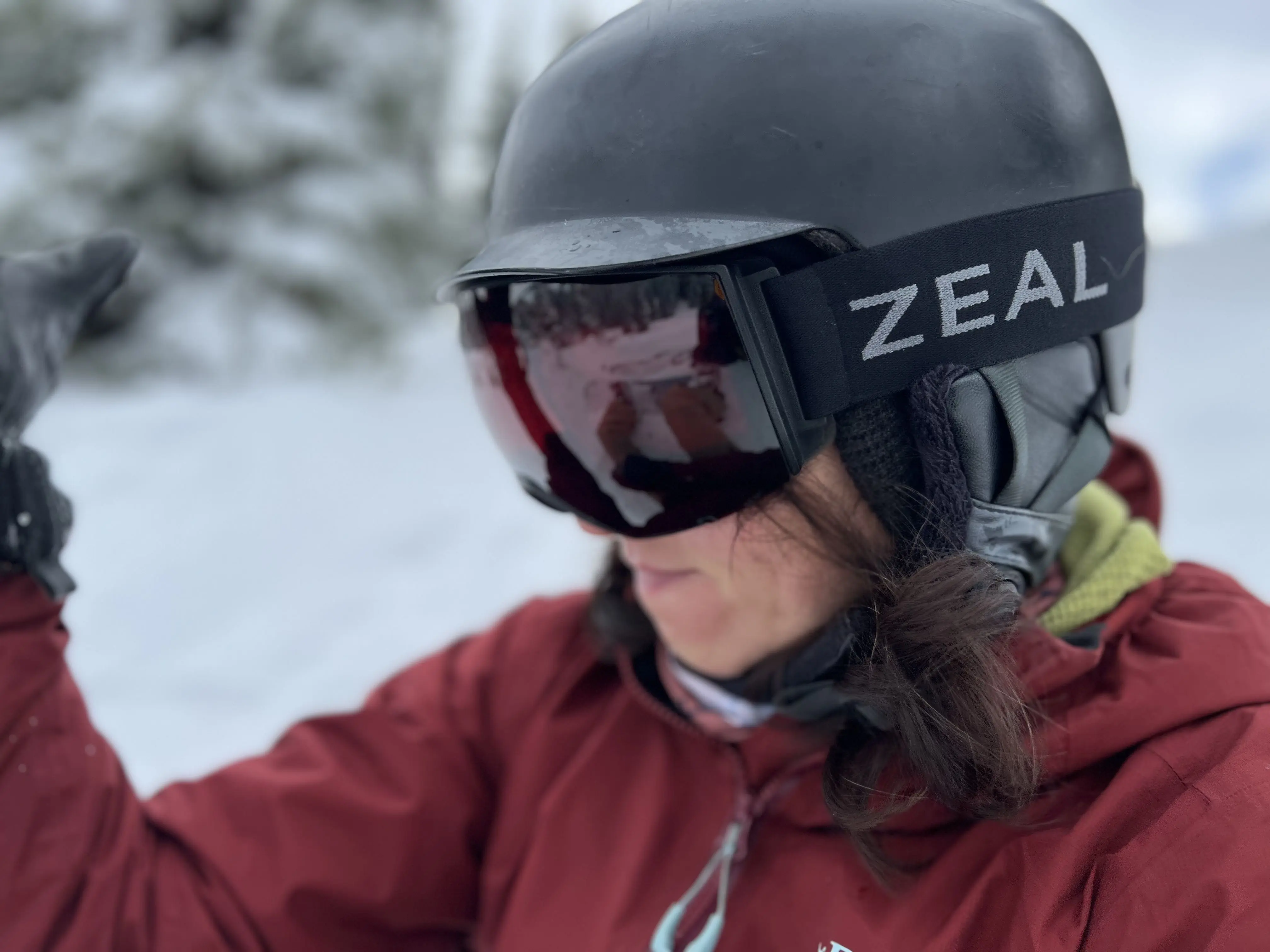
The Goggle
When you look at the Hangfire, one of the first things you notice is the bug-eye round shape of the eyewear. They bulge out from your face, but without looking oversized. Part of that is that these goggles are “over the glass ready” so they can be worn over prescription glasses.
But it’s also due, in large part to the spherical design that mimics the human eyeball. The lens curves both horizontally and vertically, helping to reduce visual distortion. It’s also supposed to limit “stress dispersion” according to Zeal, which reduces glare and fogging.
And truly, I didn’t experience any problems with glare or fogging during testing.
I did notice that if the goggles weren’t cinched extra snug around my helmet, air crept in through the top of the triple-layer face foam. The same happens with any goggles, though. And a quick adjustment to the strap solved that problem easily.
The strap itself is made from a bio-based yarn called Sorona that’s bonded with fermentation instead of chemical synthesis. Compared to regular nylon straps, Zeal says it requires 40% less energy and produces 56% fewer greenhouse gas emissions.
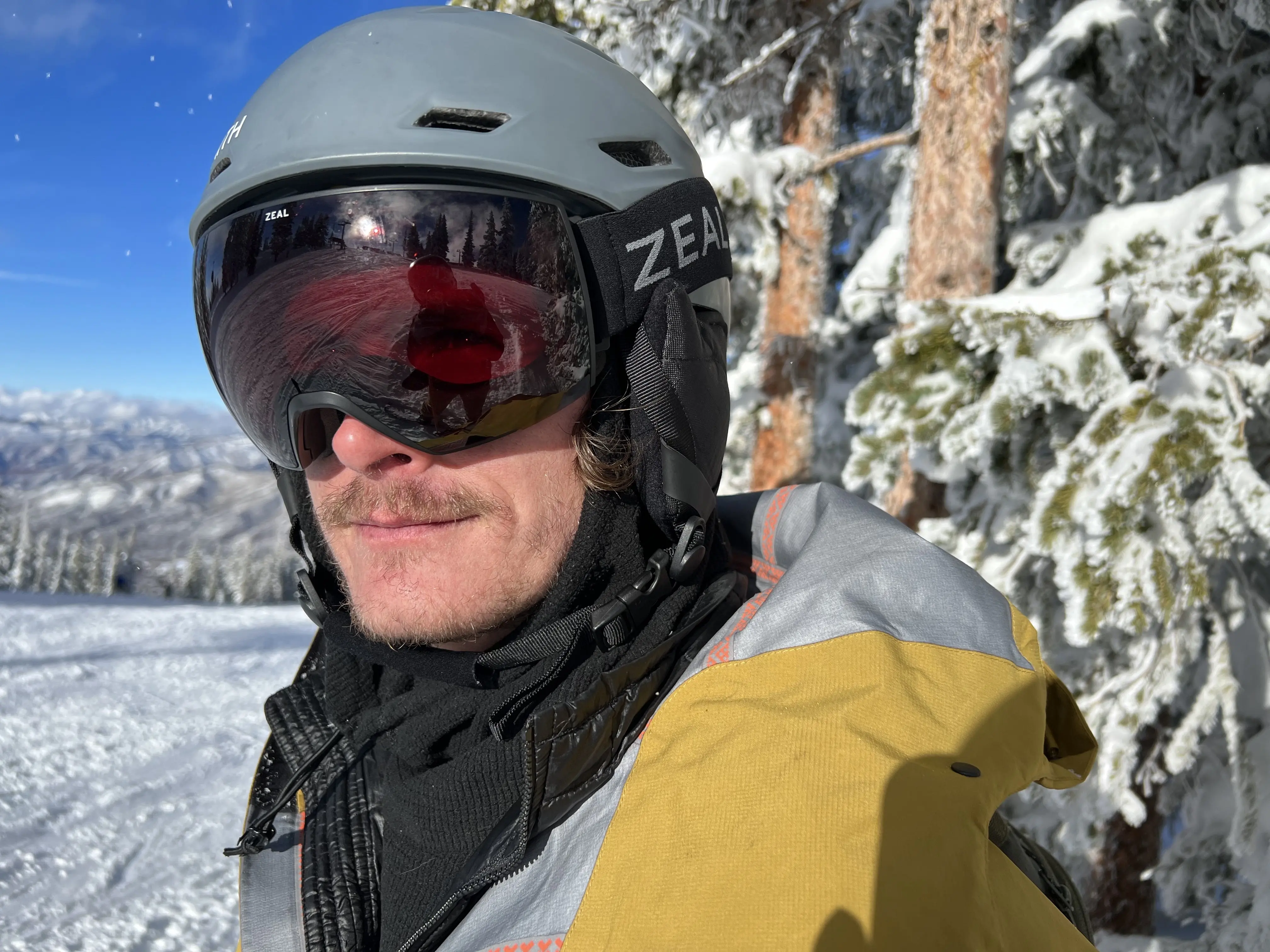
ODT
The other key feature of the Hangfire is Zeal’s observation deck technology (ODT). If you’ve ever looked at an air traffic control tower and noticed how the windows not only face outward but downward as well, you’ve seen this technology before. That allows air traffic controllers to see what’s going on below them on the tarmac, as well as in front of them.
Zeal Optics’ ODT works the same way, with the bottom of the frame situated closer to your face. That provides a larger field of peripheral vision. I’m still skeptical of the claim that it increases vertical peripheral by a full 20% — but it does increase it. And it is notable when you’re skiing or riding.
Smith has a similar technology it calls BirdsEye Vision, which was featured in its I/O MAG goggles. Smith claims that its tech increases vertical peripheral by 25%. I’m skeptical about that claim, too — but it’s safe to say that the field of vision offered by both goggles is comparable.
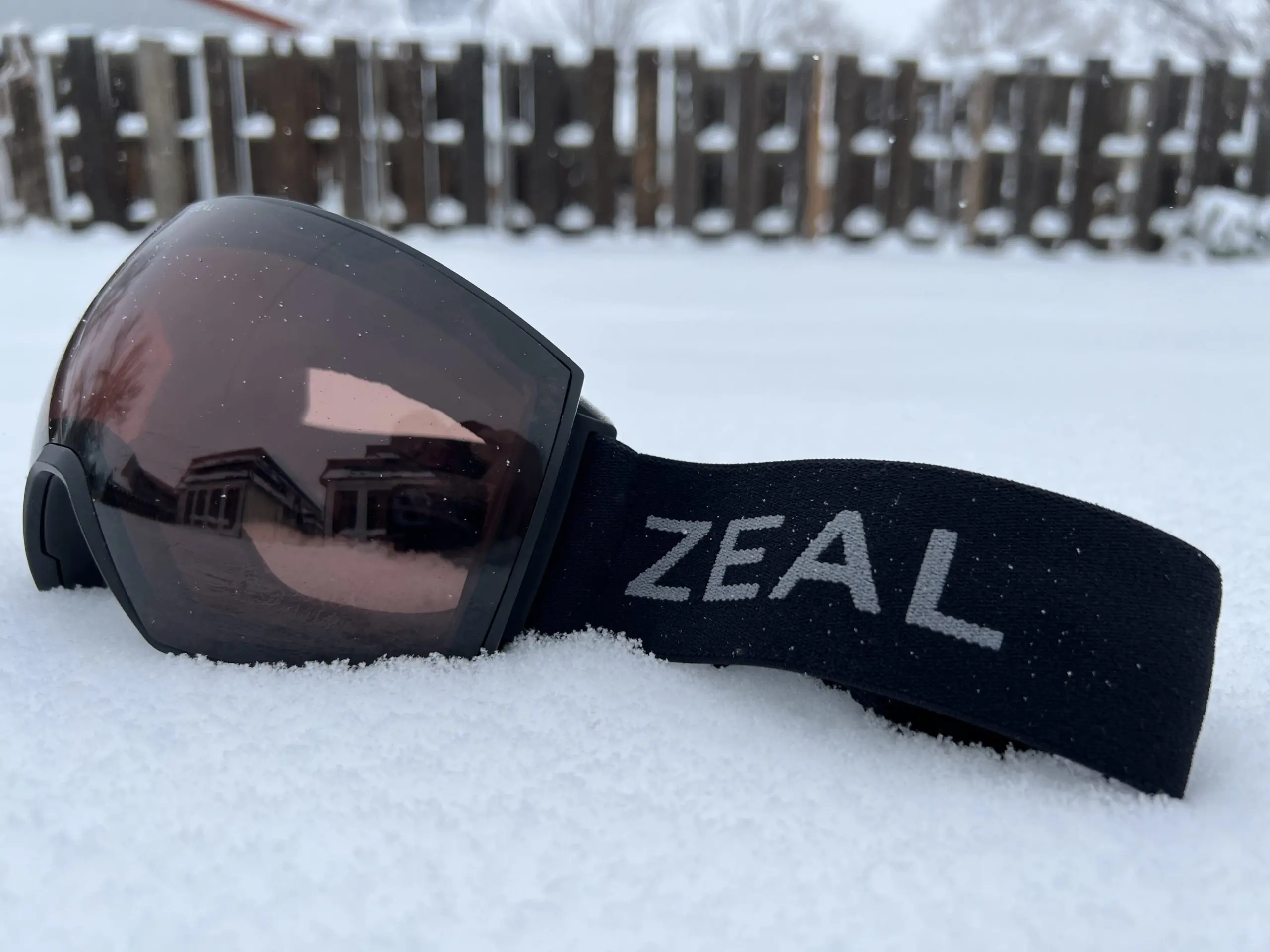



Lens Options
Zeal has several lens features that you can select from for the Hangfire. The most basic is a nonpolarized, nonphotochromic lens that is by far the cheapest option at just $129.
Then there are the polarized Hangfire lenses. Zeal sources its polarized film from Japan, and layers it in an injected lens stack. Its high-quality polarization significantly reduces glare. Hangfire goggles with these lenses are $199.
The highest tier of the lens the Hangfire comes in is polarized and photochromic — one of my favorite Zeal features. The automatic lenses adapt to the light you’re wearing them in. When it’s low light, they lighten up. When there’s lots of light, they get darker. At $249, this is the most expensive option for the Hangfire, but in my opinion, it’s worth it.
Swap the Hangfire’s lenses by simply snapping them out of the frame. It’s a click-in system that’s not quite as easy to switch as frames that use magnets to hold the lens in place (like Anon’s magnetic goggles or 100% Norgs). But it is still pretty simple to do, and it feels very secure.
And anyway, if you invest in the automatic photochromic Hangfire lens, you won’t need to swap them out at all.
Conclusion
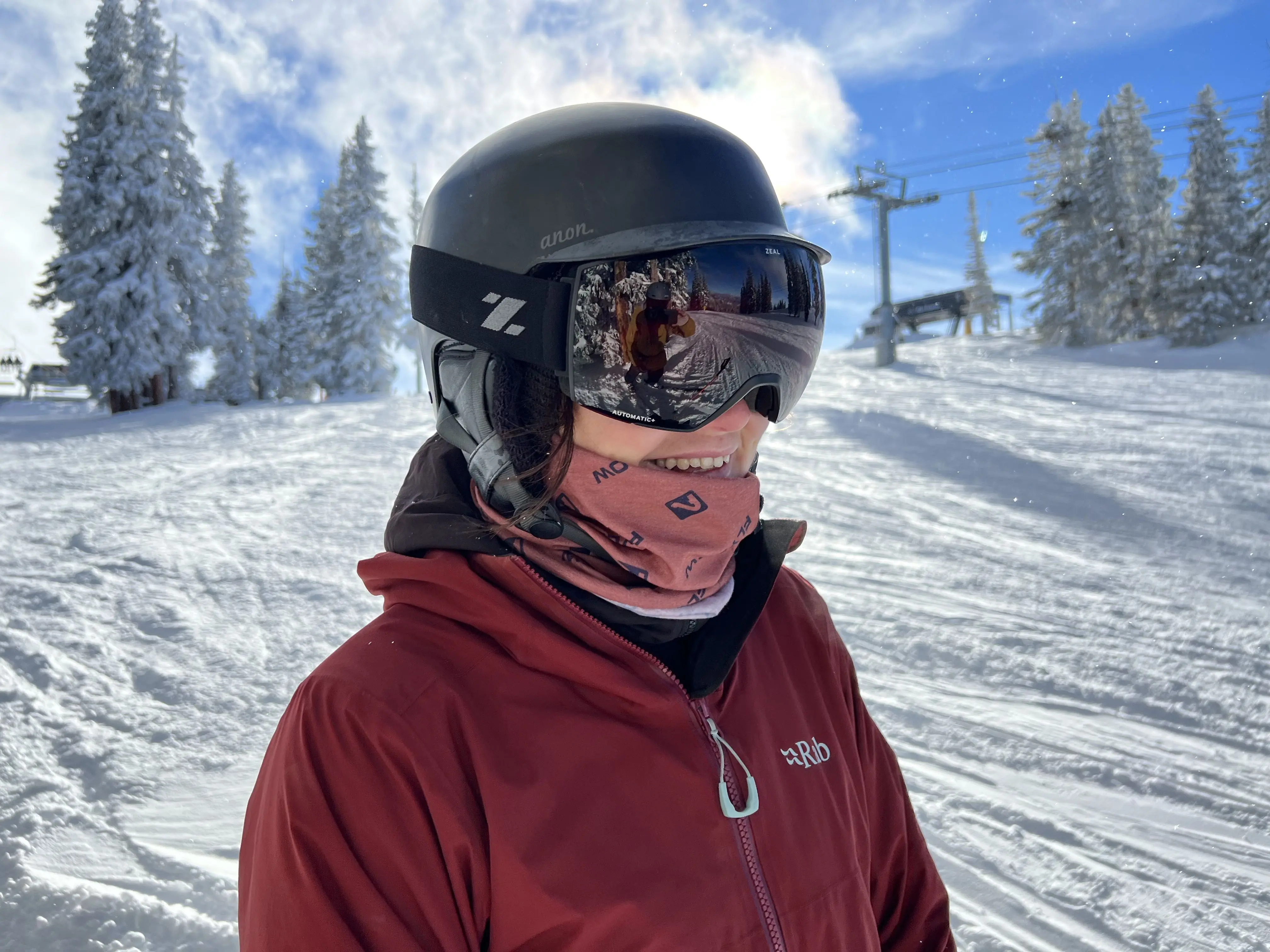



Zeal may not be the first brand to focus on offering a goggle that improves the wearer’s field of vision, with technology similar to ODT. But when all of the features of the Hangfire goggle come together — the ODT, the spherical lens, the polarization, and the photochromic lens — it culminates in something unique.
The image clarity is sharp, the peripheral field of vision is wider than average, and the goggles adapt to the light conditions you’re in.
I have enjoyed skiing in the Hangfire goggles; they look great and they perform as advertised. And with three different price options, there is a Zeal Hangfire that will fit most skier and snowboarder budgets. I’d highly recommend these goggles to anyone looking for a new pair.
Check Price at Zeal Optics